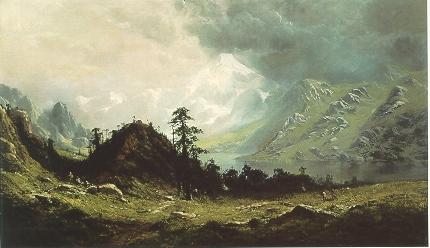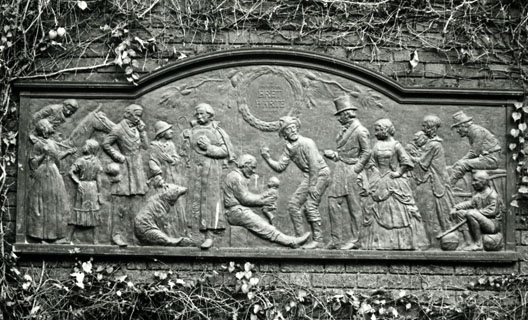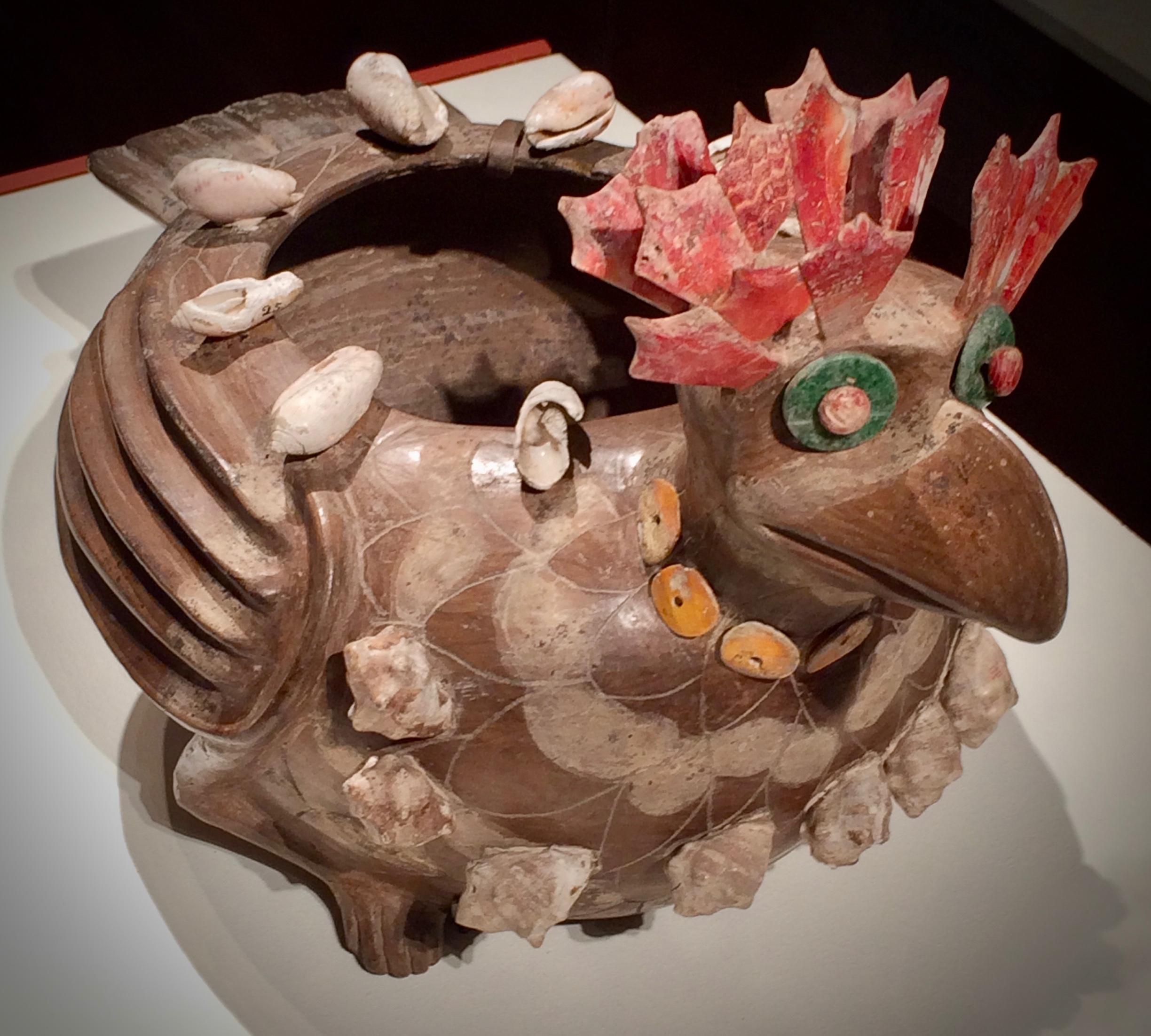|
Ransome Gillett Holdridge
Ransome Gillet Holdredge (1836 - 1899) was an early San Francisco school painter, specializing in Northern California landscapes. Biography Holdredge was born in 1836, and moved to the San Francisco Bay Area in the late 1850s, where he became head draughtsman at Mare Island Naval Yard. In 1874, with the assistance of friends and patrons, he moved to Paris for two years where he studied painting and traveled around Europe. On his return, he gained a reputation as a leading landscape artist, traveling through the Western United States from Utah and the Rocky Mountains, to Oregon and the Sierra Mountains, to Yosemite and to the San Francisco Bay Area, often living with local Native American tribes. He may have been a founder of the Bohemian Club of San Francisco, and was an early member of that association. He helped organize the San Francisco Art Association and was friends with Charles Warren Stoddard and Robert Louis Stevenson. After achieving fame, he attained some weal ... [...More Info...] [...Related Items...] OR: [Wikipedia] [Google] [Baidu] |
Hudson River School
The Hudson River School was a mid-19th century American art movement embodied by a group of landscape painters whose aesthetic vision was influenced by Romanticism. The paintings typically depict the Hudson River Valley and the surrounding area, including the Catskill, Adirondack, and White Mountains. Works by second generation artists expanded to include other locales in New England, the Maritimes, the American West, and South America. Overview The term Hudson River School is thought to have been coined by the ''New York Tribune'' art critic Clarence Cook or by landscape painter Homer Dodge Martin. It was initially used disparagingly, as the style had gone out of favor after the ''plein-air'' Barbizon School had come into vogue among American patrons and collectors. Hudson River School paintings reflect three themes of America in the 19th century: discovery, exploration, and settlement. They also depict the American landscape as a pastoral setting, where human beings and n ... [...More Info...] [...Related Items...] OR: [Wikipedia] [Google] [Baidu] |
Bohemian Club
The Bohemian Club is a private club with two locations: a city clubhouse in the Nob Hill district of San Francisco, California and the Bohemian Grove, a retreat north of the city in Sonoma County. Founded in 1872 from a regular meeting of journalists, artists, and musicians, it soon began to accept businessmen and entrepreneurs as permanent members, as well as offering temporary membership to university presidents (notably Berkeley and Stanford) and military commanders who were serving in the San Francisco Bay Area. Today, the club has a membership of many local and global leaders, ranging from artists and musicians to businessmen. Membership is restricted to men only. Clubhouse The City Club is located in a six-story masonry building at the corner of Post Street and Taylor Street, two blocks west of Union Square, and on the same block as both the Olympic Club and the Marines Memorial Club. The clubhouse contains dining rooms, meeting rooms, a bar, a library, an art gallery, a ... [...More Info...] [...Related Items...] OR: [Wikipedia] [Google] [Baidu] |
Bancroft Library
The Bancroft Library in the center of the campus of the University of California, Berkeley, is the university's primary special-collections library. It was acquired from its founder, Hubert Howe Bancroft, in 1905, with the proviso that it retain the name Bancroft Library in perpetuity. The collection at that time consisted of 50,000 volumes of materials on the history of California and the North American West. It is now the largest such collection in the world. The building the library is located in, the Doe Annex, was completed in 1950. Inception The Bancroft Library's inception dates back to 1859, when William H. Knight, who was then in Bancroft's service as editor of statistical works relative to the Pacific coast, was requested to clear the shelves around Bancroft's desk to receive every book in the store having reference to this country. Looking through his stock he was agreeably surprised to find some 50 or 75 volumes. There was no fixed purpose at this time to collect a ... [...More Info...] [...Related Items...] OR: [Wikipedia] [Google] [Baidu] |
University Of California Berkeley
The University of California, Berkeley (UC Berkeley, Berkeley, Cal, or California) is a public land-grant research university in Berkeley, California. Established in 1868 as the University of California, it is the state's first land-grant university and the founding campus of the University of California system. Its fourteen colleges and schools offer over 350 degree programs and enroll some 31,800 undergraduate and 13,200 graduate students. Berkeley ranks among the world's top universities. A founding member of the Association of American Universities, Berkeley hosts many leading research institutes dedicated to science, engineering, and mathematics. The university founded and maintains close relationships with three national laboratories at Berkeley, Livermore and Los Alamos, and has played a prominent role in many scientific advances, from the Manhattan Project and the discovery of 16 chemical elements to breakthroughs in computer science and genomics. Berkeley is also k ... [...More Info...] [...Related Items...] OR: [Wikipedia] [Google] [Baidu] |
Society Of California Pioneers
The Society of California Pioneers, established in 1850, is dedicated to the study and enjoyment of California art, history, and culture. Founded by individuals arriving in California before 1850 and thriving under the leadership of several generations of their direct descendants, the Society has continuously served its members, the academic community, and the public. As the oldest organization West of The Mississippi, The Society opened the first library in California, as well as a grand hall for meetings, lectures, and social events. Today The Society operates a public museum and a research library, both housed in one of the iconic Montgomery Barracks Buildings on The Presidio of San Francisco's historic Main Post. Pioneer Hall features rotating exhibitions of art and artifacts amassed since 1850; free museum education programs for school-aged children, as well as public tours and events are offered. The Alice Phelan Sullivan Research Library, which houses a large portion of The ... [...More Info...] [...Related Items...] OR: [Wikipedia] [Google] [Baidu] |
Utah Museum Of Fine Arts
The Utah Museum of Fine Arts (UMFA) is the region's primary resource for culture and visual arts. It is located in the Marcia and John Price Museum Building in Salt Lake City, Utah on the University of Utah campus near Rice-Eccles Stadium. Works of art are displayed on a rotating basis. It is a university and state art museum. Overview Many free public programs are continuing through the closure period, including the museum's popular Third Saturday for families, educational outreach, and ARTLandish: Land Art, Landscape, and the Environment. The UMFA's Dumke Auditorium, museum store, and museum cafe have reopened to the public. UMFA is accredited by the American Alliance of Museums. It has a cafe and store located inside the building along with more than 20 galleries. The museums permanent art collections include over 17,000 works of art. The different cultures represented include African, Oceanic and the New World, Asian, European, American, and the Ancient and Classical World. ... [...More Info...] [...Related Items...] OR: [Wikipedia] [Google] [Baidu] |
De Young Museum
The de Young Museum, formally the M. H. de Young Memorial Museum, is a fine arts museum located in San Francisco, California. Located in Golden Gate Park, it is a component of the Fine Arts Museums of San Francisco, along with the Legion of Honor. The de Young is named for early San Francisco newspaperman M. H. de Young. History The museum opened in 1895 as an outgrowth of the California Midwinter International Exposition of 1894 (a fair modeled on the Chicago World's Columbian Exposition of the previous year). It was housed in an Egyptian revival structure which had been the Fine Arts Building at the fair. The building was badly damaged in the 1906 San Francisco earthquake, and was closed for a year and a half for repairs. Before long, the museum's steady development called for a new space to better serve its growing audiences. Michael de Young responded by planning the building that would serve as the core of the de Young facility through the 20th century. Louis Christian Mul ... [...More Info...] [...Related Items...] OR: [Wikipedia] [Google] [Baidu] |
Oakland Museum Of California
The Oakland Museum of California or OMCA (formerly the Oakland Museum) is an interdisciplinary museum dedicated to the art, history, and natural science of California, located adjacent to Oak Street, 10th Street, and 11th Street in Oakland, California. The museum contains more than 1.8 million objects dedicated to "telling the extraordinary story of California." History The OMCA was founded in 1969 as merger of three smaller area museums – the Oakland Public Museum, Oakland Art Gallery, and the Snow Museum of Natural History. The seeds of this merger began in 1954 when the three organizations established a nonprofit association with the goal of merging their collections under one umbrella. This plan was eventually realized in 1961 when voters approved a $6.6 million bond issue to start the development of what would become the OMCA campus overlooking Lake Merritt in the city center. The museum's founding credo positioned itself as a “people’s museum,” wherein it was ded ... [...More Info...] [...Related Items...] OR: [Wikipedia] [Google] [Baidu] |
Custer's Last Stand
The Battle of the Little Bighorn, known to the Lakota and other Plains Indians as the Battle of the Greasy Grass, and also commonly referred to as Custer's Last Stand, was an armed engagement between combined forces of the Lakota Sioux, Northern Cheyenne, and Arapaho tribes and the 7th Cavalry Regiment of the United States Army. The battle, which resulted in the defeat of U.S. forces, was the most significant action of the Great Sioux War of 1876. It took place on June 25–26, 1876, along the Little Bighorn River in the Crow Indian Reservation in southeastern Montana Territory. Most battles in the Great Sioux War, including the Battle of the Little Bighorn (14 on the map to the right), "were on lands those Indians had taken from other tribes since 1851". The Lakotas were there without consent from the local Crow tribe, which had treaty on the area. Already in 1873, Crow chief Blackfoot had called for U.S. military actions against the Indian intruders. The steady Lakota inva ... [...More Info...] [...Related Items...] OR: [Wikipedia] [Google] [Baidu] |
Major Reno
Marcus Albert Reno (November 15, 1834 – March 30, 1889) was a United States career military officer who served in the American Civil War where he was a combatant in a number of major battles, and later under George Armstrong Custer in the Great Sioux War against the Lakota (Sioux) and Northern Cheyenne. Reno is most noted for his prominent role in the Battle of the Little Bighorn, where he did not support Custer's position on the battlefield, remaining instead in a defensive formation with his troops about away. This event has since been a longstanding subject of controversy regarding his command decisions in the course of one of the most infamous defeats in the history of the United States military. Early life and career Marcus Albert Reno was born November 15, 1834, in Carrollton, Illinois, to James Reno (originally Reynaud) and his wife, the former Charlotte (Hinton) Miller, a divorcee with one daughter, Harriet Cordelia Miller, from her first marriage. The couple had six ... [...More Info...] [...Related Items...] OR: [Wikipedia] [Google] [Baidu] |








.jpg)
